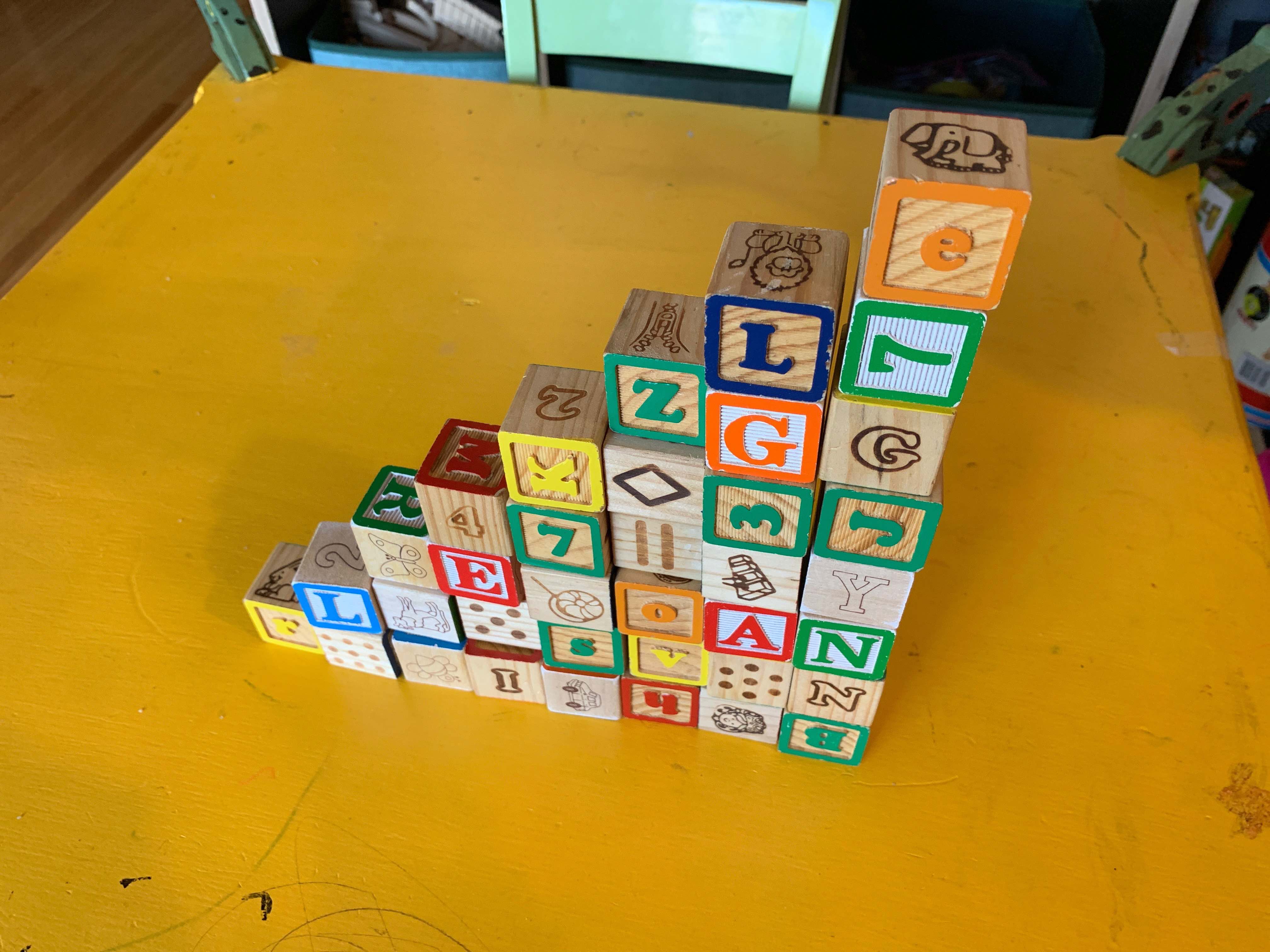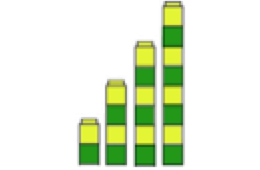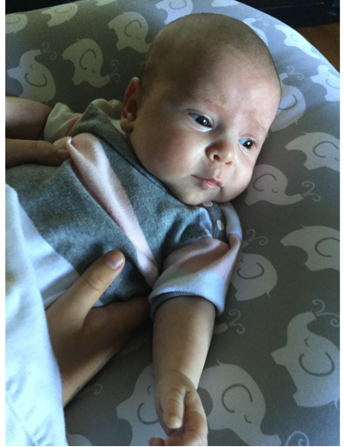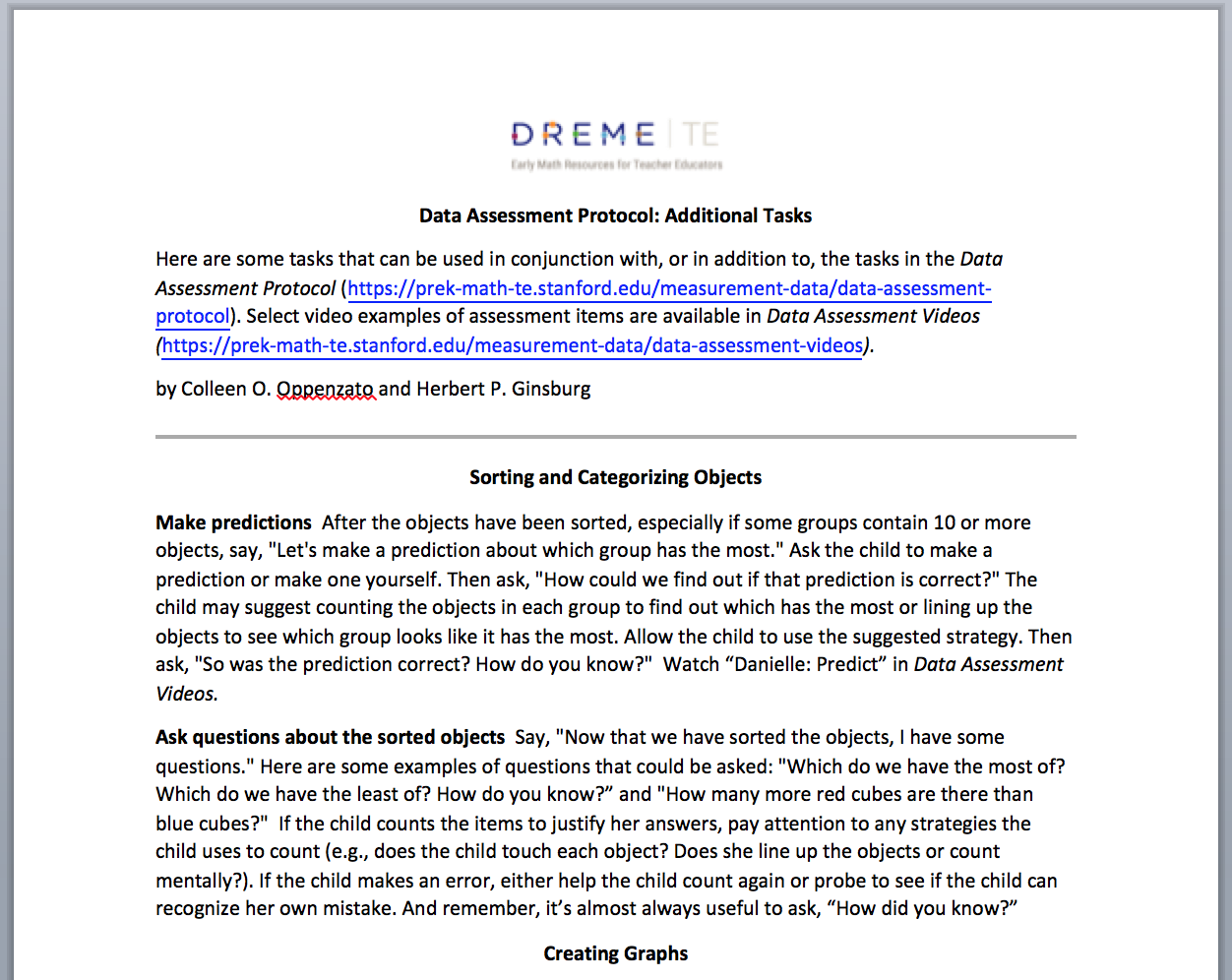These tasks are designed to help you assess an individual child’s understanding of patterns. The protocol begins with relatively simple concepts such as recognizing and completing repeating patterns and moved on to more advanced concepts like growing patterns.
Revised March 30, 2019.
The tasks in this protocol can help you answer questions about a child’s understanding of patterns. Here are three ideas that can be explored:
- Repeating patterns have a unit that repeats.
- Growing patterns increase by a constant amount.
- Patterns can consist of sounds or movements as well as objects or numbers.
The resource Math Thinking Conversations provides guidelines for how to use these kinds of tasks to explore a child’s mathematical understanding.
The tasks that follow have been organized according to the questions listed above. For more assessment tasks that can be used in conjunction with, or in addition to, the tasks below, see Patterns & Algebra Assessment Protocol: Additional Tasks (download below). Related video examples of assessment items are available in Pattern and Algebra Assessment Videos.
Repeating Patterns
-
Identify AB patterns Use manipulatives of different colors to show the child an AB repeating pattern.

Ask the child: “What do you notice?” If needed, follow with, "Is this a pattern?" If the child says yes, ask: "Can you describe the pattern?" The young child will likely say the colors in order, "red-yellow-red-yellow-red-yellow." A child may also describe the repeating unit, saying, "It keeps repeating, red and then yellow, over and over." If the child does not know the word for pattern, you can follow up by asking, “What do you notice about the order of the colors?” Watch Diane: AB Pattern here.
- Identify other repeating patterns If the child is successful with AB patterns, ask the child to describe more complex repeating patterns such as an ABB pattern, an ABC pattern, or an AABB pattern. For example:

- Make a repeating pattern Scatter cards or manipulatives with different attributes on a table. Ask the child to make a pattern with the cards. Watch as the child attempts to make a pattern. Pay attention to what the child is doing. For example, is the child looking back and forth from the pattern s/he is creating to the objects. When the child is finished, ask "Can you tell me why this is a pattern?" If it is a pattern, see if the child can describe the rule or if the child describes the alternating attributes. If it isn't, say, "I don't think this is a pattern. Can you fix it so it is a pattern?"
- Extend a repeating pattern Present a repeating pattern and ask the child to continue it. pattern. For example, show the child a pattern of alternating clear, yellow, and red beads (or other objects).

Then place several beads on the table. Point to the last bead in the pattern. Ask, "What would go next?" Ask the child to place the next object. Then ask the child to continue the pattern a few more times.
Do not always stop at the end of a repeating unit. For example, if the pattern is ABC, don't always stop after C and ask what comes next. Finding the next term may be more challenging if it falls in the middle of the repeating unit, so show clear-yellow-red-clear and stop after clear, asking what comes next. Watch Diane: Explain and Extend a Pattern here.
- Explain or identify the rule for a repeating pattern Use a pattern that either you or the child has created. Ask, "Can you describe this pattern?" The child will probably say or list the alternating colors or objects in the pattern. Ask, "Can you describe the rule for this pattern?" If the child is not familiar with rules or does not respond, you may scaffold by saying, "The rule tells us what is repeating in this pattern. Do you know what is repeating?" See if the child can identify the repeating unit. If the child does not describe it in words, ask, "Can you point to what is repeating?" Watch Meredith: Explain a Pattern here and Sonia: Identify Unit of Repeat here.
Growing Patterns
 Identify and describe a simple growing pattern Say, "I am going to make towers." Use connecting cubes or blocks to make five or six towers, adding one more block each time. Ask, "Is this a pattern?" If the child says no, scaffold and show how the towers are growing. If the child says yes, ask, "Can you describe this pattern?" The child might say it is a "staircase pattern" or that it is "getting bigger." The child might use numbers to describe the pattern, saying "1, 2, 3, 4, 5, 6."
Identify and describe a simple growing pattern Say, "I am going to make towers." Use connecting cubes or blocks to make five or six towers, adding one more block each time. Ask, "Is this a pattern?" If the child says no, scaffold and show how the towers are growing. If the child says yes, ask, "Can you describe this pattern?" The child might say it is a "staircase pattern" or that it is "getting bigger." The child might use numbers to describe the pattern, saying "1, 2, 3, 4, 5, 6."
- Identify and describe a pattern that grows and repeats Use connecting cubes or cards of alternating colors to make four towers. Ask, "Is this a pattern?" If the child says yes, ask, "Can you describe this pattern?" The child might describe that the pattern
 repeats "green-yellow." The child might also say, "The pattern grows by twos" or may answer generally, saying “It is getting bigger.” Use whatever suggestions the child gives as a starting point for more pattern analysis. Watch Brian: Describes a Growing Pattern here.
repeats "green-yellow." The child might also say, "The pattern grows by twos" or may answer generally, saying “It is getting bigger.” Use whatever suggestions the child gives as a starting point for more pattern analysis. Watch Brian: Describes a Growing Pattern here. - Make a growing pattern Scatter connecting cubes or blocks of different colors on a table. Place cards with the numbers 1, 2, 3, and 4 on the table. Ask, "Can you make your own growing pattern? Try to make 4 towers." Encourage the child to make a pattern that is different than the others you have explored.
- Make a shrinking pattern Scatter connecting cubes or blocks of different colors on a table. Place cards with the numbers 1, 2, 3, and 4 on the table. Say, "You know that there are growing patterns. Do you think you could also make a shrinking pattern? Try to make 4 towers to show a shrinking pattern." After the pattern has been created, ask, "Is this a pattern?" If the child made a correct shrinking pattern ask, "How does the pattern shrink?"
Sound and Movement Patterns
- Identify and extend a sound pattern Say something like, "Let's pretend a robot says 'Beep-bop-beep-bop-beep-bop'." (Alternate your tone and/or volume when you say beep and bop.) "Continue the robot's pattern. Beep-bop-beep-bop-beep-bop-beep,... What does the robot say next? How do you know?" Continue with other sound patterns, either spoken or created with a musical instrument. For example, if you have a xylophone with colored bars, you could strike the red bar, followed by the blue bar and then the blue bar again.
- Identify and extend a movement pattern Say, "Watch what I do." Then clap your hands twice and snap once. Repeat clap-clap-snap at least three times. Say, "Now what if I do this?" clap-clap-snap-clap-clap-snap-clap. "What comes next? How do you know?" Try some other movement patterns.




